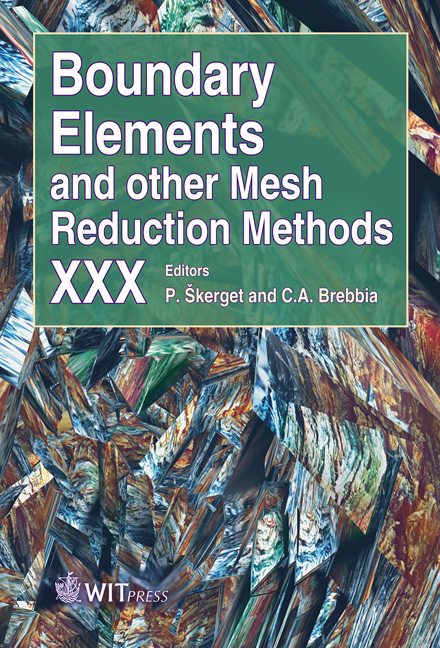Interfacial Debonding And Damage Progression In Particle-reinforced Composites
Price
Free (open access)
Transaction
Volume
47
Pages
9
Page Range
127 - 135
Published
2008
Size
475 kb
Paper DOI
10.2495/BE080131
Copyright
WIT Press
Author(s)
S. Womack & M. S. Ingber
Abstract
Decohesion between the matrix and inclusions in advanced multi-component composite materials is an important failure mechanism. In particular, the overall bulk strength of the composite depends strongly on interfacial damage and debonding. A 3-D model of interfacial decohesion is developed for a spherical particulatereinforced composite material. In this model, interfacial failure is initiated by the loss of ellipticity.Adiscrete constitutive equation is used to represent failure at the interface of the composite. Incremental displacement steps are applied to the model within the elastic range of the constituent materials and the interface is analyzed using the boundary element method to determine the progression of interfacial damage and debonding. The effective properties of the bulk composite are calculated at each incremental step. Keywords:composite materials, decohesion model, incremental debonding, boundary element method. 1 Introduction A composite is a manufactured material with two or more physically or chemically distinct phases. Particle composites typically contain a matrix material and inclusions. The interface between the inclusion and the matrix is a bonding surface, across which both weak and strong discontinuities occur [1].Weak discontinuities are defined as discontinuous changes in the strain field across the limits of a narrow strain localization region over which the displacement field remains continuous. Under load, strong discontinuities may develop, causing the displacement field to become discontinuous and the strain field to become unbounded.
Keywords
composite materials, decohesion model, incremental debonding, boundary element method.





